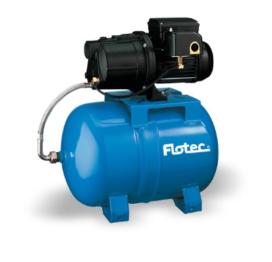
Miami Science Barge
The Miami Science Barge is a floating laboratory and environmental education center. Situated on Biscayne Bay in downtown Miami, it is a platform to encourage Miami to become a more ecologically conscious city.
The Barge is entirely self sufficient, and does not need to be connected to the city for water or electricity. Solar panels are used to power the Barge, and rainwater and seawater are collected to support the living systems on board.
There are three major areas of the Barge: the classroom area, which doubles as an event space, the water level platform, and the farm area.
The Barge hosts field trips for students from area schools. The classroom area has four picnic tables and benches for students to set up microscopes and conduct research. The tables were specially designed to be multi-purpose; they can be turned on their side to double as a bar for evening events.
There is a staircase down to a platform supported just at the water level where marine experiments are conducted. Students visiting the Barge for field trips have a chance to step down onto the platform to collect plankton from the Bay to examine under a microscope. This is an important way for students to understand that the Bay is very much alive and that it is critical for us to do our part to keep the waters clean in order to protect it.
The farm area is home to several different types of living systems in order to showcase sustainable ways to produce food. These systems include hydroponics, aquaponics, and aquaculture.
There are currently three, soon to be four, hydroponic systems on the Barge. The high-density vertical tower system was donated by EzGro Garden and has nine towers with four pots in each tower. The support for this system was custom built by Sara Tomeo, the South Florida representative for EzGro Gardens, out of Kebony. Kebony is the same sustainable wood product that was used to build the deck and some other living system supports and displays. The tower system is very productive, currently growing chard, basil, bunching onions, beets, and kohlrabi. The NFT systems are growing leafy greens such as arugula, lettuce, and chard, and the Bato buckets are growing peppers and eggplant. Even though the Barge is right on the water and highly susceptible to salt spray, the plants are thriving in their unique environment.
The agroponic aquaculture system, more commonly referred to as aquaponics, is utilizing fish waste to fertilize the plants in the grow bed. Water from the blue tilapia tank gravity feeds into a settling tank with crayfish that help to further break down fish waste. Water then passes into a sump tank, where it is pumped into the grow bed. Plant roots utilize nutrients from the water, which helps to clean the water for the fish.
Aquaculture systems are a model for sustainable seafood production. The goal is to shift from antiquated methods of collecting fish from the oceans, to recirculating aquaculture systems to protect our oceans and their marine life. Two aquaculture systems are on the Barge, one is growing cobia and the other is growing shrimp.
One more system is located in this area, and it is a model of a seagrass ecosystems that you could find while snorkeling in Biscayne Bay. This system has two types of seagrass, seahorses, brittle stars, crabs, and shrimp. All systems are zero discharge, meaning that none of the water used on board is emptied into the Bay. When water changes are done, water is purged into a constructed wetland that is planted with mangroves and native grasses at the back of the farm area. Plants utilize the nutrients from the living systems, and the water evaporates.
The Barge is open to the public on weekends, host field trips on weekdays, and hosts all types of special events in the evenings. It is inspired by the New York Science Barge, which was created by Ted Caplow in 2007. Dr. Caplow is the CEO of CappSci, the parent company to the Miami Science Barge. Miami is a city rich in biodiversity and is susceptible to natural disasters, but it lags behind other cities in community engagement and sustainable planning. The goal of the Barge is to provide a space to bring people together and act as a launching point for a more sustainable Miami.

Texas farm goes vertical to net tall yields

An EzGro Garden At Amalie Arena

Seeds of Knowledge, Chicago, IL

Gartner Callaway Sustainability Company

Vera Street Farms in Texas
Trackbacks and pingbacks
No trackback or pingback available for this article.
One comment
Leave a reply Delete Message
Articles
Featured
-
 EzGro Precision Micro TrimmerRegular Price $11.99
EzGro Precision Micro TrimmerRegular Price $11.99 -
 Five Tower Deck GardenRegular Price $2,499.00
Five Tower Deck GardenRegular Price $2,499.00 -
 Vegetable Formula single dose SetRegular Price $29.99
Vegetable Formula single dose SetRegular Price $29.99 -
 EzGro Quad Pot 50 PackRegular Price $499.90
EzGro Quad Pot 50 PackRegular Price $499.90 -
 Outdoor 3 Outlet Smart Plug TimerRegular Price $39.99
Outdoor 3 Outlet Smart Plug TimerRegular Price $39.99 -
 Drain Dish & Diffuser Dish SetRegular Price $16.99
Drain Dish & Diffuser Dish SetRegular Price $16.99 -
 Tri-Helix Solar WindmillRegular Price $4,399.00
Tri-Helix Solar WindmillRegular Price $4,399.00 -
 Patio Garden Recharge KitRegular Price $49.00
Patio Garden Recharge KitRegular Price $49.00 -
 Drain Dish & Diffuser Dish Set 10 PackRegular Price $124.99
Drain Dish & Diffuser Dish Set 10 PackRegular Price $124.99 -
 Rainwater Pressure Tank SystemRegular Price $449.00
Rainwater Pressure Tank SystemRegular Price $449.00









Wow, what a concept and a great leaning tool for the next generation. Plants are my life and growing them on land can sometimes be a challenge. Soil, sun and water....